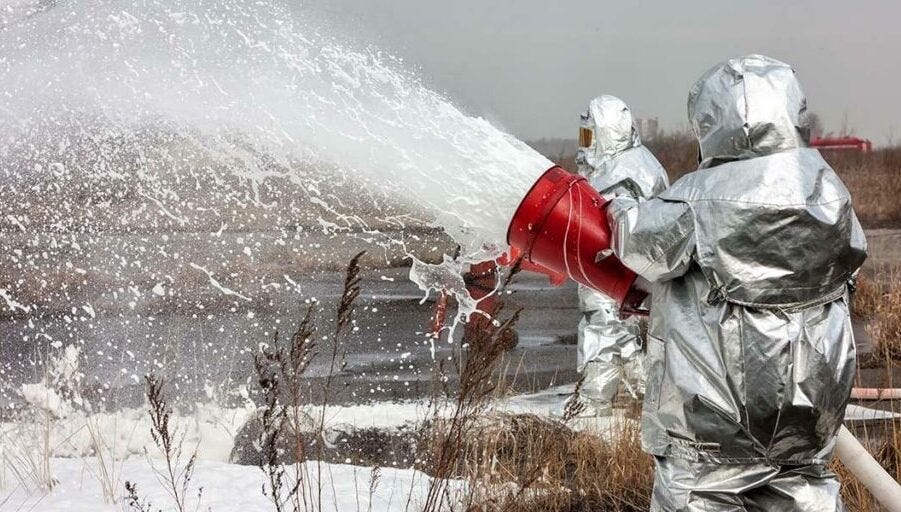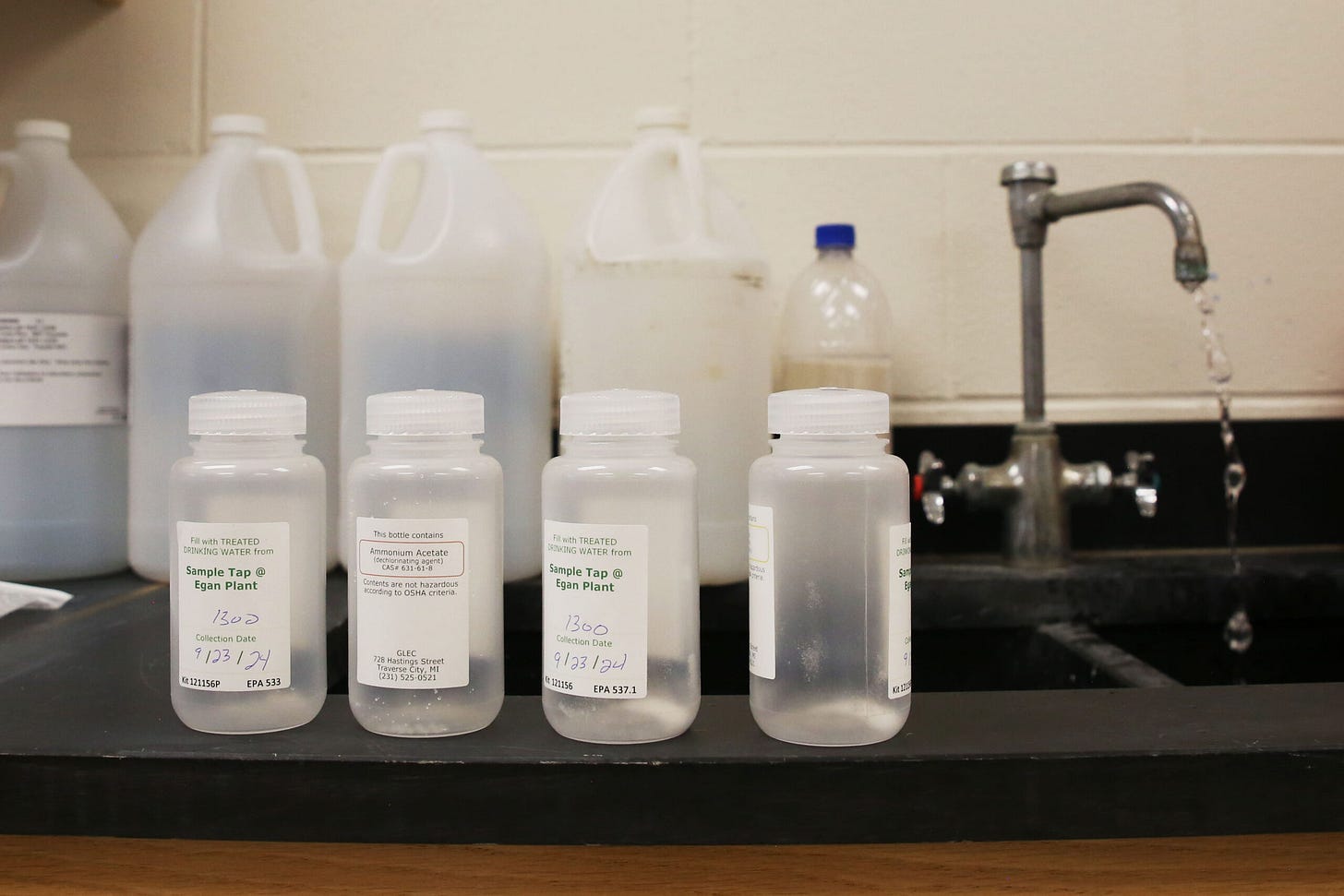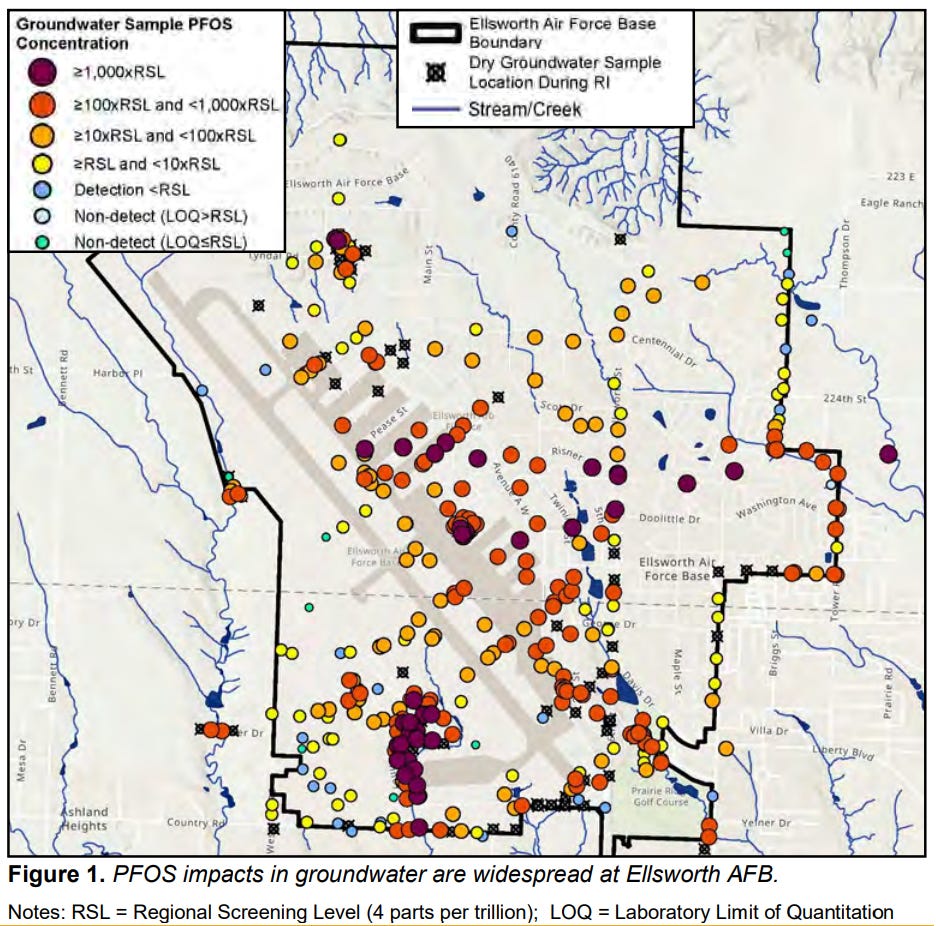Sioux Falls Receives $37 million in ‘Forever Chemical’ Lawsuit Settlement with 3M, DuPont
Ellsworth, Box Elder continue work to address contamination.

Nearly six years after Sioux Falls officials filed a federal lawsuit against chemical manufacturers for pollution discovered in the city’s groundwater, the city received its first installment of settlement money this June: $37.2 million.
Dave Pfeifle, city attorney, said in an emailed statement that the funds will be reserved to “replenish, protect, and secure source water” for the city. Vanessa Gomez, the mayor’s chief of staff, added that the city is in the process of determining the “best course of action” to place the settlement funds into a “restricted and committed” fund to achieve that goal.
Per- and polyfluoroalkyl substances (PFAS) have been used in industry and consumer products since the 1940s, including in modern products such as nonstick cookware and water-resistant clothing, and don’t break down easily in the environment or in the human body. Research indicates PFAS exposure may be linked to negative developmental and reproductive effects, and an increased risk of some cancers.
“PFAS have become a widespread, environmental issue that affects not only Sioux Falls, but the nation, and impacts people’s lives through the everyday products they use,” Pfeifle said. “The City’s proactive response and pursuit of litigation is a testament to our commitment and responsibility to supply safe and reliable drinking water to our community.”
Sioux Falls was one of thousands of plaintiffs in a class action lawsuit against manufacturers of firefighting foam that contained PFAS. The settlement agreement was approved by a U.S. District Court in South Carolina last year. The full amount that the city will receive is unknown, Pfeifle said. The city did not respond to a follow up question seeking an explanation.
Sioux Falls alleged that chemical-makers tested for and were aware of health risks of compounds used in a firefighting foam that for decades was tested and stored at the Sioux Falls Regional Airport. Investigators for the Air National Guard — which is co-located at the airport — tested the soil and groundwater near the airport beginning in 2013, finding high amounts of PFAS.
Health advisories from the EPA set a safety limit of 70 parts-per-trillion for drinking water at the time. Groundwater and soil near the airport was contaminated at a rate of 255,100 parts-per-trillion, according to analysis of military records by Northeastern University and advocates with the nonprofit Environmental Working Group.
PFAS mitigation, testing and planning efforts
Sioux Falls officials shuttered 21 of the city’s 64 wells “out of an abundance of caution” once the contamination was identified, Pfeifle said, “which significantly impacted the city’s ability to harvest water and severely limited its water supply.”
The Environmental Protection Agency proposed regulating PFAS levels in drinking water at a stricter 4 parts per trillion in 2023, which experts projected would cost South Dakota water systems hundreds of millions of dollars to test and treat. Water providers throughout South Dakota have since been testing drinking water to ensure compliance once the limits are in place, including federal testing of private wells. Initial tests of Mount Rushmore’s drinking water exceeded the new limit in 2024.
The EPA under the Trump administration is planning to delay enforcement of some PFAS drinking water limits until 2031 and reconsidering rules for other types of PFAS.
Sioux Falls plans to follow PFAS guidance from the South Dakota Department of Agriculture and Natural Resources, said Sioux Falls Public Works Director Mark Cotter. It’ll continue its monthly PFAS testing, Cotter added in an email, “which shows Sioux Falls’ drinking water is well within all health-based limits” set at the state and federal level.
The city expects to receive several more payments over the next decade from the 3M settlement, as well as chemical manufacturers DuPont, Tyco and BASF. The payments will be listed in the city’s monthly financial reports.

The state of South Dakota plans to open its own drinking water testing laboratory, and South Dakota State University researchers plan to test surface water and environmental samples, including animal tissue and plant material, to understand how the chemicals work their way through the food chain. The state is currently sampling South Dakota surface waters for PFAS, after the East Dakota Water Development District and South Dakota Mines found PFAS along the Big Sioux River watershed in the eastern part of the state last year. It is also offering free PFAS cleanup to local fire departments and schools throughout the state.
The Sioux Falls Regional Airport Authority also sued companies behind the firefighting foam in 2019, seeking damages for the cost of investigating and addressing the contamination. Dan Letellier, executive director, said the airport is part of a group of property and landowners set to go to trial or potentially settle.
Ellsworth, Box Elder continue investigation and mitigation of PFAS contamination
Other South Dakota communities have experienced PFAS contamination, including Box Elder near Ellsworth Air Force Base and wells at National Guard facilities near Custer and in Rapid City.
Ellsworth is one of many military installations throughout the country with PFAS contamination, South Dakota Ellsworth Development Authority Business Operations Manager Howie Aubertin told South Dakota Searchlight.
Groundwater and soil at Ellsworth Air Force Base were contaminated at a rate of up to 551,000 parts-per-trillion as of 2016, according to analysis of military records by Northeastern University and the Environmental Working Group.

The contamination affected dozens of families living near the base and on the western edge of Box Elder city limits. The property owners were provided bottled water, treatment systems for private wells or were hooked up to a waterline from the base.
Box Elder, Ellsworth Development Authority and Rapid City partnered to build a pipeline to transport water from Rapid City to about 35 impacted properties. Construction on the $12.5 million project, funded by the U.S. Air Force, began last year and is expected to finish by the end of the year, Aubertin said. The Air Force provided additional funding to widen the system and provide for the base’s future growth.
The base is still studying the extent of PFAS in non-drinking water sources around and near the base with plans to remedy the contamination.
“The issue of PFAS at Ellsworth is not solved, and the Air Force recognizes that,” Aubertin said. “It is still in its investigative and exploratory phase.”
Makenzie Huber is a lifelong South Dakotan who regularly reports on the intersection of politics and policy with health, education, social services and Indigenous affairs. Her work with South Dakota Searchlight earned her the title of South Dakota's Outstanding Young Journalist in 2024, and she was a 2024 finalist for the national Livingston Awards.
South Dakota Searchlight is part of States Newsroom, the nation’s largest state-focused nonprofit news organization.
ESG University republishes their articles, features and stories online and/or in print under Creative Commons license CC BY-NC-ND 4.0.




